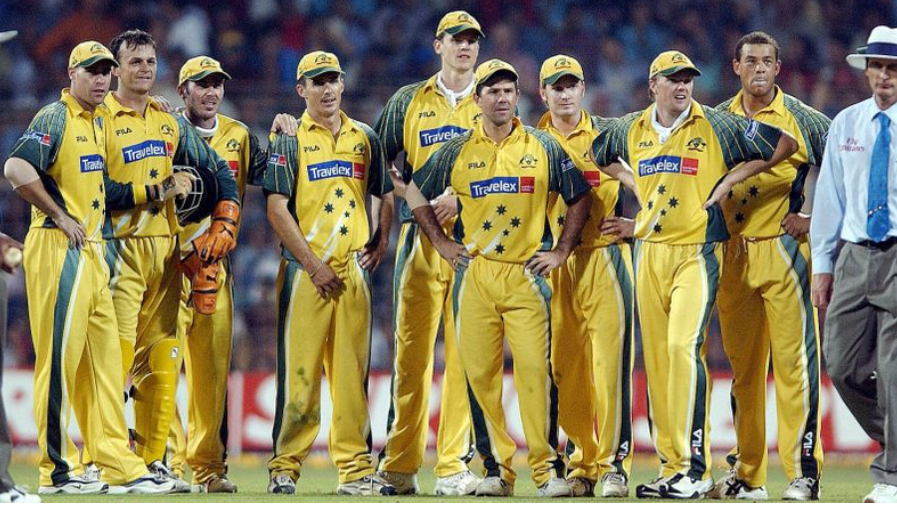Whenever people mention a dynasty, they typically talk about something like the Mongols or the British. While there are many more, the point being is the main word this makes people think of is “rule” or “empire”. In the world of sports, the same definition translates over, except it does not involve any blood shed, famines or any other type of suffering of that sort. Instead it features baring the wrath of having to play against a juggernaut of a team or player that always seems to come out on top, year after year, leaving many fanbases suffering and in pure agony. In other words, the definition of “dynasty” in the context of sports is the act of winning consistently for a long period of time respective to the sport that’s being played. For the game of basketball, it was the Chicago Bulls in the early to mid 90s and the Golden State Warriors in the mid to late 2010s and for the sport of soccer within regards to the FIFA Word Cup, it would have to be Brazil and Germany. The main ones that come up for cricket are the West Indies from the mid 1970s and now the Australians, whose reign hasn’t ended yet.
Taking a look at this century alone, the Australians have won 4 of the 6 the six ODI World Cups (2003,2007,2015, 2023) that have been played until now. On top of that they have managed to win the t20 World Cup once since its introduction in 2007 and also the World Test Championship, which was recently introduced two years ago for the more longer format of the game. The most impressive stretch being from 1996 to 2011, where they appeared in the finals of the 1996 World Cup and ended up winning three back to back World Cups between 1999 to 2007. Without a doubt, Australian cricket has created a dynasty that’s lasted almost 25 years! But the real question is how has a country with only a population of 26 million people managed to accomplish this feat and establish a winning culture for so long? While the answer may not be that simple, it is still pretty straightforward and requires a bit of knowledge of the sport as well to know exactly what is being talked about.
A cricket team is mainly constructed with 4 main components: the batsman, allrounders, spin-bowlers and pace bowlers. In the case for Australia in each one of their five word cup wins, they historically deployed a 5-3-0-3 scheme, which just simply means they had 5 batsman, 3 allrounders and 3 pace bowlers. There was also a slight deviation in 1999, where they went with a 5-2-1-3, and 4-3-1-3 scheme in 2023. These deviations only came when a generational player was playing and for Australia it happened to be Shane Warne in 1999 and Adam Zampa in 2023. They both are right arm leg spinners and share a similar style with the leg break. As far as the pace bowling goes, Australia has always relied on very tall physically intimidating bowlers who also maintain their fair share of speed. It is almost an irrefutable fact in the ODI format of the game, so much so they have created their own blueprint to follow, no matter which era of cricket they are playing in. This winning formula was first established with Glenn McGrath who is regarded as one of the best bowlers of all time but it wasn’t too long after he retired that they turned their heads to Mitchell Starc as the spearhead bowler for the country and that has paid off handsomely so far. Some interesting things to take a look at on the batting side are the openers, in particular the use of Mark Waugh and Travis Head, who at first glance appear to be pure batsman, but carry a unique role by actually disguising themselves as all rounders given the amount of overs they were asked to bowl in the finals stages of their respective World Cup tournaments alone. Other than having this happen a grand total of two times out of their five world cups wins, there hasn’t been an underlying pattern that Australia has followed with the type of batsman they chose to play. One thing that probably can be considered is the style of play depending on which given batting position a player is in. The number 3 is typically the most skillful/ aggressive and the number 4 is patient/consolidator. A example of this would be looking at the roles of guys like Ricky Ponting and Darren Lehmann versus Steve Smith and Marnus Labuschagne. Anything after in the lower middle order is just reserved for very big strikers of the ball, guys like Andrew Symonds or Glenn Maxwell can stand as an example. They can be absolutely lethal strikers of the ball when they get going.
All in all, Australia deserves their success in the game of cricket.Many fans and pundits across the world should continue to study what this team has done , because it clearly has worked time and time again. However the biggest question now is will Australia continue to follow their own well-establishing winning formula for years to come?


